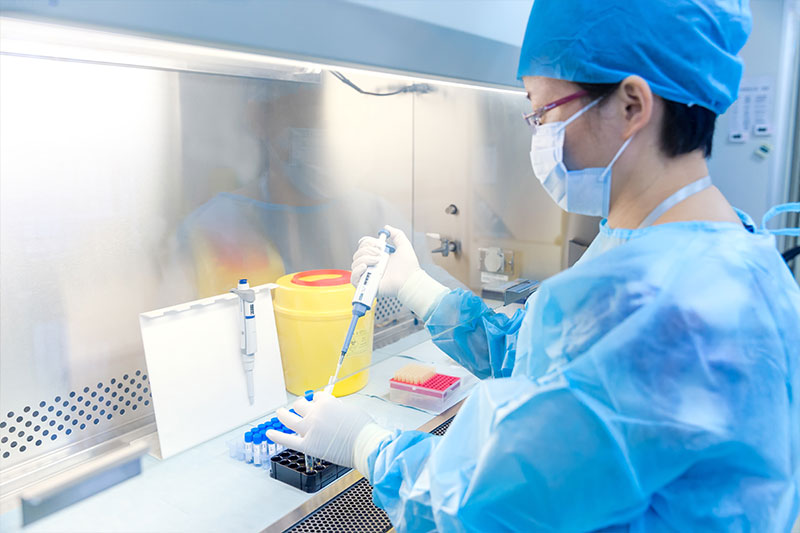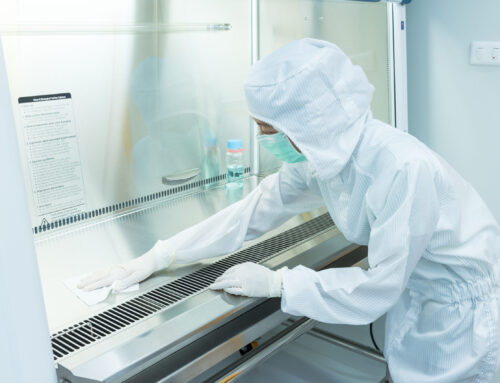Cleanrooms play an essential role across many different industries where controlled environments are essential to avoid contamination from even the most common environmental elements such as dust, humidity and airborne particulates. The challenge for operations personnel is how to best ensure that mission critical cleanrooms are sustained, meet often rigid compliance standards, and are secured from intentional or accidental breaches.
Door interlock solutions, also commonly referred to as mantraps or airlocks, resolve most if, not all of these concerns when implemented properly, making cleanroom management much more manageable. But there are many considerations to consider when looking to implement a new or existing cleanroom door interlock system.
Depending upon the specific designated processes taking place within the cleanroom, door interlock systems can include any of the following capabilities: air system control, traffic control, user feedback indication, touch-free access, emergency override operation, access control, and/or forced door & door prop alarms.
Some cleanrooms require pressurized air systems to maintain a sterile environment. This requires door interlocks to incorporate a timed delay before entry is granted into the cleanroom so that re-pressurization of the interlock can take place. This is often controlled by a simple timer or a monitored pressure switch. While the air is pressurized, traffic indicator lights are typically also employed to alert personnel when pressurization is complete for safe entry.
Some cleanroom locations may not allow any doors to be locked to permit free egress at any time. While this may provide an added degree of safety for personnel working in cleanrooms, it opens up the possibility of unauthorized entry of personnel during critical processes. This is most easily addressed with the use of red/green traffic lights mounted on either side of the doors to indicate when access is allowed. Adding a built-in sounder which annunciates an improper opening can also help minimize such actions. Additionally, with functions like re-pressurization that may be taking place, traffic indicator lights can be used to provide user feedback.
While automatic door openers are frequently used to provide convenient touch-free access, special considerations are required if interlocking door controls are involved. Many door interlock systems with automatic door openers have “open”, “close” and “stop” push button controls for operators supervising personnel entry and egress. These doors typically employ electric locks and cannot be opened manually by personnel looking to gain entry or egress to a cleanroom. When an operator grants cleanroom access to an individual, the first door is unlocked, thus activating the automatic door opener, enabling touch free access. Once inside the interlock, access to the cleanroom area is then dependent on other factors such as repressurization, if required.
Providing a means to override a locked door is common in cleanrooms with a door interlock system in the event that an emergency arises. In such installations, consideration must be given as to how or when the system should be reset, and the doors relocked. Using a latching switch or emergency pull station in the secured room allows the user to unlock all doors or a particular door by activating the emergency button or pull station. The designated doors will remain unlocked until the switch is manually reset to normal. A programmed time delay may also be used to automatically relock the doors after a designated period of time.
Controlled access using card readers, biometrics or proximity devices is provided in secured cleanroom facilities. In addition to tightly controlling when and which individuals can gain access to a cleanroom, access control systems also can provide valuable forensic data on when and how long doors are opened and closed for both security and compliance reporting.
It’s also important to remember that cleanrooms often require cleaning, so all electrical devices need to be sealed and protected from frequent washdowns. Likewise, the locks, lighted devices, etc. must be sealed from moisture. Specially rated devices can be supplied that meet these criteria.
Dortronics Systems is a leading supplier of interlocking door systems. Feel free to contact our team of experts to help guide you through the cleanroom door interlock design process. You can also download our free whitepaper, Best Practices for Selecting and Installing Door Interlock Technology.



